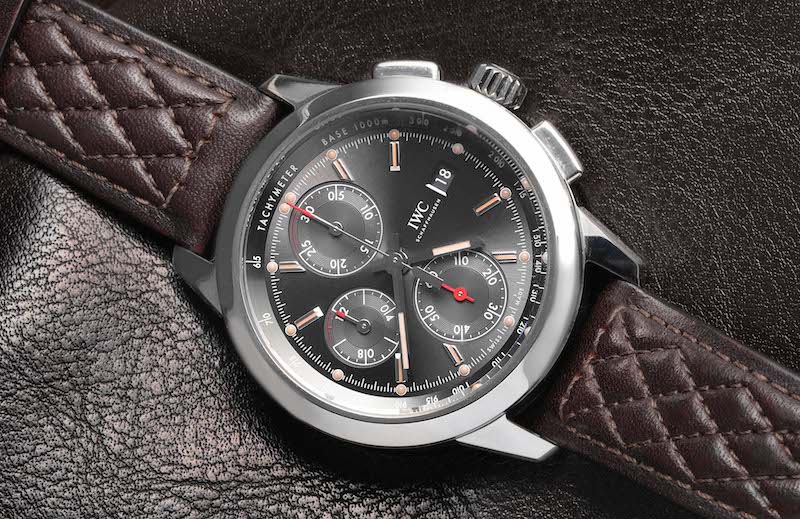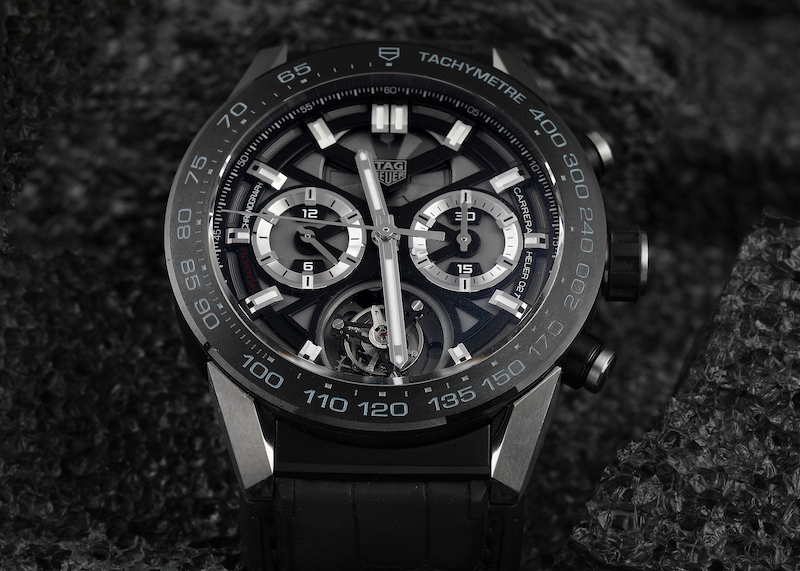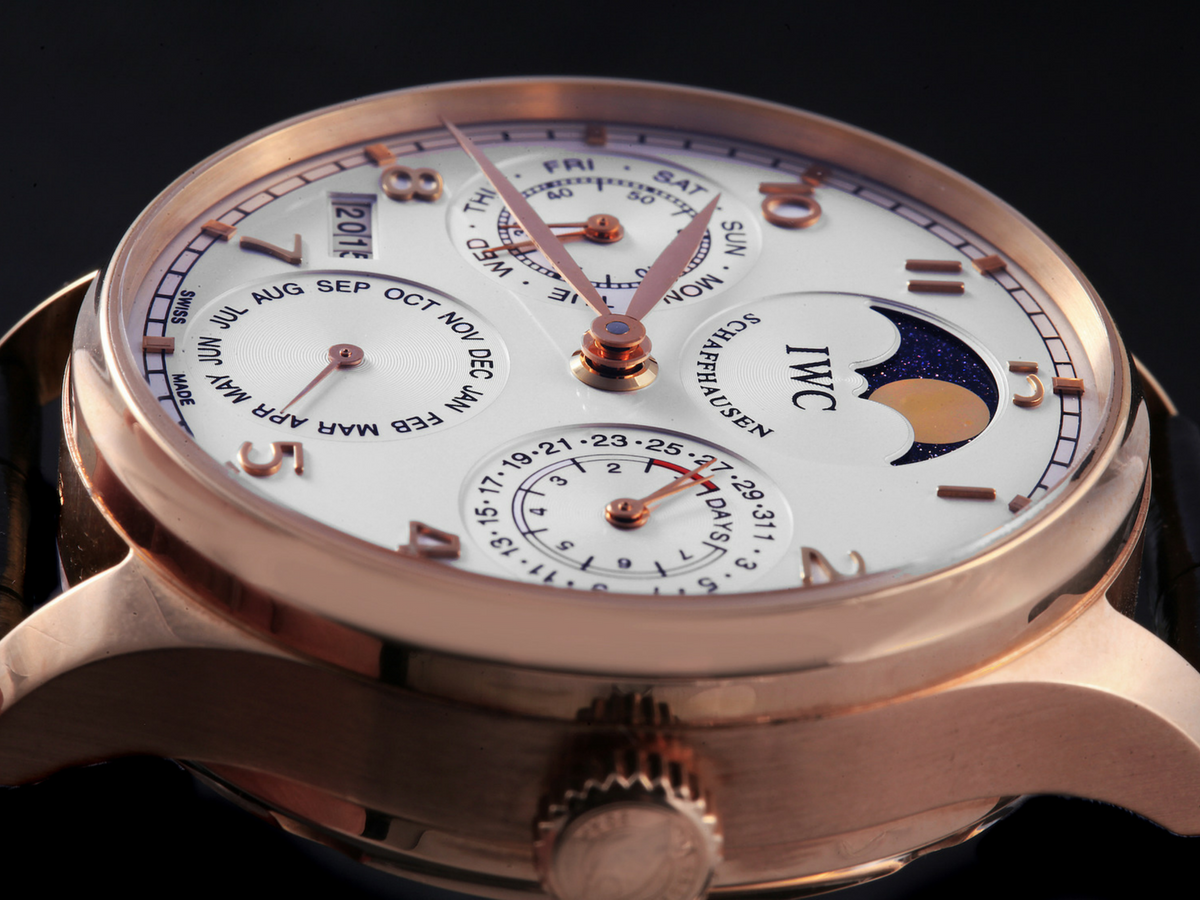Watches have always been designed to do more than simply tell time. From watches for different sports, to timepieces that can be worn in space, they have always catered to the activities of man. Thus, watch complications came to be. A watch complication is a function that exists in addition to telling the time. True to its name, watch complications can sometimes be complex or difficult to understand, even for the most savvy of watch collectors. But they don’t need to be, er… complicated. In fact, a complicated watch is designed to simplify your life. Here’s a brief explainer of common watch complications, from the simplest to the most complex: b br |
|
DATEThe date display is the simplest complication that exists in watches. It displays the date, typically at a window on the 3 o’clock position. This function has to be manually adjusted at the end of 30-day months, as well as the end of February, to reflect the proper date. While most date watches have a digital date displayed numerically on a window (also called an aperture) on the dial, there are also analog date watches. An analog date complication uses a center hand to point to a date on the edge of the dial.
pictured: Rolex Date Silver Dial Steel Mens Watch
br |
|
|
DAY-DATE A watch with a day-date complication displays the day of the week in addition to the date. The day is typically displayed on an aperture at the 12 o’clock position, while the date window is typically at the 3 o’clock position. With the introduction of the Rolex Day-Date in 1956, Rolex was the first to introduce a waterproof and self-winding chronometer timepiece with the day of the week displayed fully on the dial.
pictured: Rolex President Day-Date 36 Everose Gold Mens Watch
br |
|
|
CHRONOGRAPH A chronograph watch is a timepiece that serves as both a display watch, and a stop watch. It is one of the most popular and most useful complications in watchmaking. A chronograph complication allows the wearer to measure and record periods of time, but without affecting the time-telling functions of the watch. The basic chronograph has an independent sweep second hand, a minute sub-dial, and two “pushers” that are used to start, stop, and reset the time. Chronographs also typically have tachymeter scales on their bezel or on the rim of the dial. The tachymeter scale is used to measure speed, or the time it takes the object to travel a known distance. Most tachymeter scales are valid for all elapsed times starting at about 7.2 seconds and up to 60 seconds. |
|
|

While often thought of as a special watch for races, chronographs are actually tool watches with many practical uses. They can be used to track time for various activities: cooking times, meetings, parking meters, bike rides, and more. What also makes chronograph watches popular is its ability to engage the wearer. Operating a chronograph involves turning knobs, clicking the pushers, and watching the indicators closely – providing a quiet thrill that watch enthusiasts know too well. Lastly, chronograph watches are loved for their aesthetic appeal. Through the use of two to three subdials, chronographs are able to achieve a symmetrical and balanced look on the dial. Because chronograph watches were also mainly used for professional racing over the years, many associate its look with that of classic cars. pictured: Omega Speedmaster 57 Broad Arrow Watch and IWC Ingenieur Caracciola Slate Dial Limited Edition Mens Watchb |
|
TIMEZONE COMPLICATIONSWhether you’re a frequent traveler or work with people in different time zones, a watch that can tell the time in more than one place can be very useful. There are 3 complications commonly used to do this:
br |
|
GMT GMT stands for Greenwich Mean Time or the starting point on a 24-hour scale of international timezones. Using this scale, the GMT watch tells two or more timezones. Typically, a GMT hand will have the hour-hand that tells time on a 12-hour scale; then another colored hour-hand is added to tell the second time, usually on a 24-hour format on the bezel. Only two timezones can be read simultaneously on a GMT watch, but with for GMT watches with rotatable 24-hour bezels such as the GMT-Master II, a third timezone can be displayed. If you want to read time on a third timezone, one should rotate the bezel by the number of hours forward or behind home time. The third timezone will be indicated by the numeral that the 24-hour hand points to on the bezel. br |
|
|
DUAL TIME Dual time watches, as the name suggests, display two different times at once. Most commonly, you’ll see the second time at a subdial at 6 o’clock, showing the time on a 12-hour scale. pictured: Rolex Cellini Dual Time White Gold Automatic Watch
br |
|
|
WORLD TIMEA World Timer shows the time in all 24 timezones across the world, at once. The watch does this through a rotating bezel that shows major cities around the world, with a corresponding bezel that indicates time on a 24-hour scale. Those who do business with people in more than one timezone will find this extremely handy. pictured: Breguet Marine World Time Hora Mundi 18K Yellow Gold Watch br |
|
|
CALENDAR COMPLICATIONSCalendar watches display the day, date and month of the year, and sometimes even the year. Since we have leap years and calendar months have different numbers of days, some watches have more advanced features to track these changes automatically.
br |
|
ANNUAL CALENDARAn annual calendar automatically adjusts the date displayed on the watch based on 30- and 31-day months. However, it still requires setting the date once per year, at the end of February which has less then 30 days. pictured: Omega Aqua Terra 150m Annual Calendar Watch br |
|
|
PERPETUAL CALENDAR A perpetual calendar requires even less intervention than the annual calendar. Not only does it adjust for 30- and 31-day months, but will also automatically adjust for leap years. The next time perpetual calendars have to be adjusted is in year 2100. pictured: IWC Portuguese Perpetual Calendar Rose Gold Watch br |
|
|
TRIPLE CALENDAR
A triple or full calendar displays the date, day, and months on the dial, often with the moon phase as well. In triple calendar watches, the date wheel reads all months as 31 days in a month, therefore needing correction in cases of months less than 31 days.
MOONPHASEThe moon phase is one of the earliest known complications in horology. The moon phase indicator, usually at an aperture at 6 o’clock, displays the current phase of the moon as it shifts from full to new, and back again, over the course of 30 days or one month The moon phase is usually added to a calendar watch, but it can also stand alone. As the name suggests, it tracks the present phase of the moon by calculating the lunar cycle – 29 days, 12 hours, 44 minutes and 3 seconds. A moon phase watch has a beautiful rotating disk that indicates whether it is new, full, half or quarter moon.Moon phase complications are seen as romantic, elegant, and are one of the most visually pleasing complications in horology. br |
|
|
POWER RESERVE COMPLICATION
A power reserve indicator is a complication designed to tell the wearer the amount of the watch’s remaining stored energy, before the movement has to be wound again. The power reserve is often displayed on the dial in the form of a semi-circle, showing the number of hours left before the watch needs to be wound.
Most fully-wound mechanical watches often have a power reserve of up to two days (35-48 hours), it serves as a subtle reminder to wind the watch to prevent it from stopping.
<>MINUTE REPEATERA minute repeater audibly chimes the current time on demand, through a series of dings and dongs, and by activating a push- or slide-piece on the watch. While it’s no longer commonly used today, repeaters were created to help the visually-impaired tell time or to tell time in the dark back when there was no electricity yet. br |
|
|
Today, they are coveted by watch aficionados for their ingenious engineering and beautiful sound. pictured: Breguet Minute Repeater 18K Yellow Gold Watch
b |
|
<>TOURBILLONThe tourbillon is the most complex, elusive, and most expensive complication in watchmaking – a contraption found only in high-end mechanical watches. “Tourbillon” is a French word that means “whirlwind”, which aptly describes the movement of the complication. Introduced in the era of the pocket watch, the tourbillon was invented by Abraham-Louis Breguet in 1795, and patented in 1801. The tourbillon was created to counter the effects of the Earth’s gravity on the accuracy of the watch movement. When a watch spends the majority of its time stuck in either a horizontal or vertical position, this puts a strain on the hairspring inside its escapement, thereby decreasing its accuracy. |
|
|

By placing the watch’s balance wheel and escapement into a rotating cage, it counteracts the adverse effects that gravity places on the watch movement’s accuracy, when the watch is in certain positions. The tourbillon was a solution invented by famed watchmaker Abraham-Louis Breguet in the 1700’s, where an escapement is housed in a rotating cage and is constantly on the move – thereby averaging out the effect of gravity. Its use is often questioned these days and is often used to display a watch’s virtuosity and beauty. pictured: Tag Heuer Carrera Tourbillon Chronograph Titanium Mens Watch CAR5A8Y
In the history of watchmaking, complications have led to new ways of innovation and design, allowing watchmakers to push boundaries – whether it’s by maximizing the functionality of watch, or including multiple complications in one timepiece. |
br
____
SEE MORE OF THE WATCHES IN OUR VIDEO:
____
PHOTO CREDIT: Tourbillon By Greubel Forsey, licensed by CC BY 3.0, via Wikimedia Commons.















